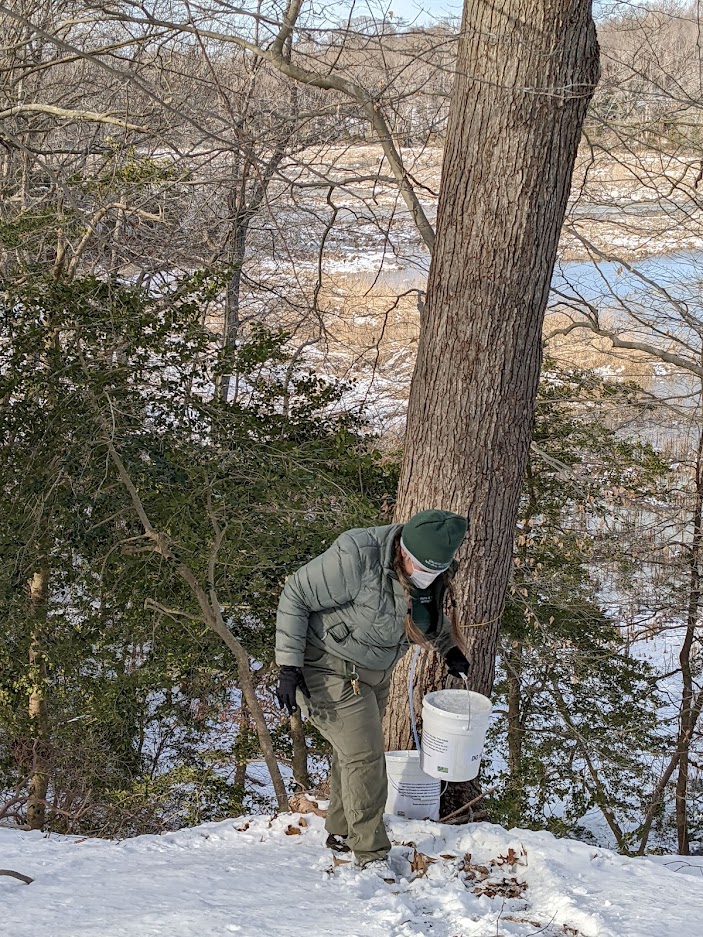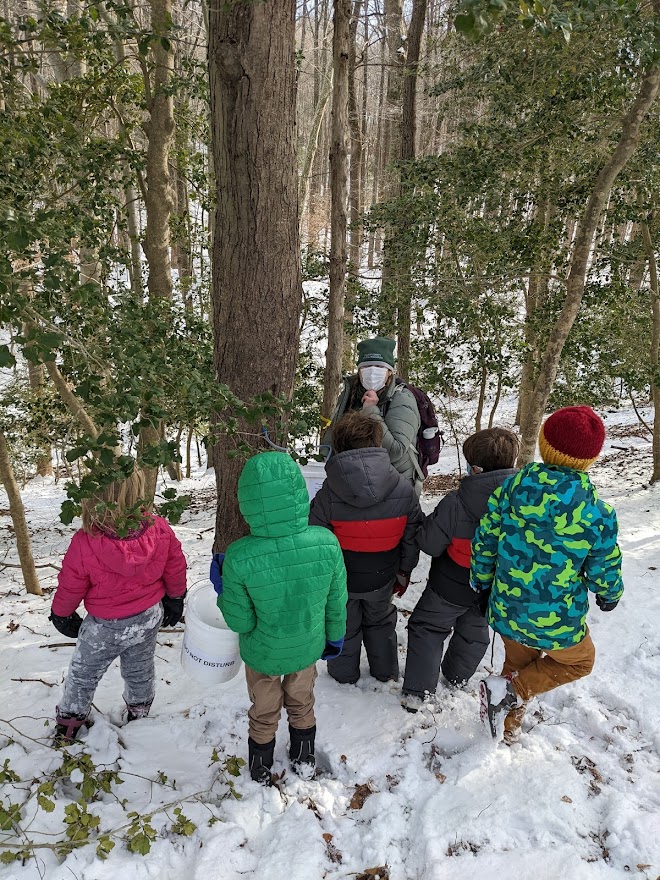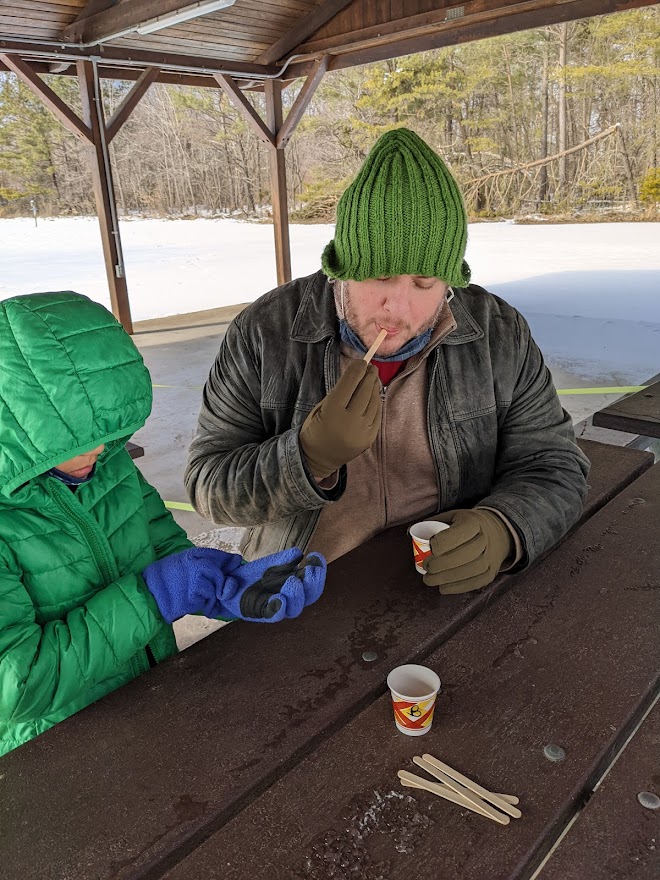A Different Kind of Tap



By Molly Weeks Crumbley
Do you have a maple tree in your yard? Then, believe it or not, you might just have a free source of maple syrup. Though large-scale Maryland maple syrup production only occurs in the western region of the state, Chesapeake Country locals can produce their own small batches. To teach the community how it’s done, the Calvert Nature Society is hosting its annual Maple Sugarin’ Time series through the end of February.
Attendees gathered for the first session in a pavilion at King’s Landing Park in Huntingtown, where park naturalist Jessy Oberright kicked things off with a blind taste test to see who could tell the difference between real and artificial maple syrups.
“It’s our third year tapping maple trees in our park,” Oberright explained. Maple tapping is a uniquely North American pursuit that goes back hundreds of years, she said. Historians believe that Native Americans first got the idea to tap trees from the yellow-bellied sapsucker, a bird that uses its beak as a drill to extract tree sap from maples. The technique was then passed to the colonists, who used maple sap as a cheap sugar substitute in an era when importing goods would have been costly and time-consuming.
Luckily for the colonists and current-day maple enthusiasts, any type of maple tree can be tapped for sap. Not quite as lucky, it takes a lot of sap to create the syrup. “Forty gallons of sap need to be boiled to make one gallon of maple syrup,” said Oberright. “I probably only made about a pint from our tapping last year.”
Oberright then led participants through the snow-covered “sugar bush” at King’s Landing, pointing out the different trees that had been marked for tapping. This year, the park is planning to collect sap from eight trees. Participants were able to watch her swap out sap collection buckets in addition to a demonstration of placing a new tap.
If you’re hoping to tap your own trees, Oberright explains that you’ll need a few tools: a drill (hand-cranked or electric), hammer, bucket, and spile (a metal spigot). The internet is full of maple sugar starter kits for sale, or you can create your own. The best time to tap maples is right now when temperatures drop below freezing at night but warm to the 30s or 40s by day. The disparity between temperatures turns the tree into a natural pump, allowing the sap to flow more easily. All participants were given a set of instructions on how to begin their own maple syrup production.
Register for one of the next three Maple Sugarin’ Time sessions, Sundays Feb. 6, 13, 20, at 2pm, $8 fee for non-members, RSVP: calvertparks.org.
